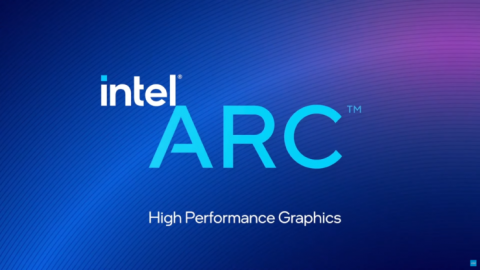Intel Arc Alchemist, features and specifications of discrete video cards with X and HPG architecture

Intel Arc Alchemist
Just a few days ago, Intel unveiled the brand for its next high-performance graphics devices dedicated to private consumers. Intel Arc is the official name that will represent new hardware, software and services for the next generations of products. The first to arrive on the market will be Intel Alchemist, based on the Xe HPG architecture unveiled during the recent Architecture Day event.So let's see what features and technical specifications await us from the first line of Intel Alchemist discrete graphics cards, dedicated to the increasingly demanding gamers.
What is Intel Alchemist?
The new roadmap with discrete graphics cards from Intel Alchemist is the first line of discrete video cards made by Intel coming to the market in the first quarter of 2022. The manufacturer has already defined a roadmap for the future, in which Alchemist represents only the first step towards the market of GPUs dedicated to gamers. Intel chose this historic moment to enter the discrete graphics card market, because there are currently 1.5 billion PC gamers in the world with 13 million development studios and 8.8 billion hours of related streaming content. videogames. All these gamers, enthusiasts, content creators and developers are looking for better tools to be able to express their skills, creativity and enjoy the gaming experience to the fullest. Intel has made significant progress with integrated graphics cards, doubling performance year after year over the past two generations. Now is the time to take the next step forward, moving to discrete cards, taking advantage of the new Intel Xe HPG microarchitecture. In the future, Intel plans to evolve that architecture and bring subsequent lines of discrete graphics cards called Battlamge, Celestial, and Druid.Intel Xe HPG, the microarchitecture by Alchemist
Xe HPG architecture The new Intel Xe HPG microarchitecture represents the convergence of the previous Xe LP, HP and HPC architectures, which combine scalability and processing efficiency with advanced graphics capabilities. Intel designed it with one goal in mind: to meet the needs of gamers who demand the best performance from their favorite titles. The basis of this microarchitecture is the new Xe-core, consisting of 16 Vector Engines (256 bits for each) and 16 Matrix Engines (1024 bits for each). Subsequently these Xe-cores are grouped into what they called Render Slice, which contains:4 Xe-cores with XMX Geometry Pipeline, Rasterization Pipeline, Samplers, Pixel Backends designed to work with DX12 Ultimate 4 units Ray Tracing with Ray Traversall, Bounding Box Intersection, Triangle Intersection
Intel Xe HPG is completely scalable, in fact, to increase performance in a single card, simply merge various Render Slices together to obtain greater computing power. Intel has combined up to 8 Slices for a total of 32 Xe-cores, also greatly improving the performance per watt of electrical power. This makes Xe HPG an ideal solution to be exploited both in simple integrated graphics or the most sophisticated discrete cards up to powerful data centers and supercomputers. The Xe HPG microarchitecture was designed entirely in collaboration with TSMC, thanks to their N6 construction technology. The first line of Intel products with this microarchitecture will arrive in the first quarter of 2022 under the name Alchemist, while a future roadmap has already been defined with the subsequent evolutions of the architecture itself.
Intel Alchemist Software
The software dedicated to Intel Alchemist Intel Alchemist will arrive on the market with a series of new software, drivers and APIs aimed at optimizing the user experience. The new Core Drivers have been created for both integrated and discrete graphics cards and will arrive later this year as a free update. Thanks to a work done on the compiler and memory manager, Intel has improved the CPU bandwidth by 18%, the loading time in video games has decreased by 25% and in general several optimizations have been made to the entire graphics sector of the units of calculation. Intel has also worked on the software and libraries necessary to make the Hardware based Ray Tracing, Mass Shading and Sampler Feedback work making it compatible with Unreal Engine 5, DirectX 12 Ultimate, Vulkan and Unity. Finally, Intel has also created special functions and services to optimize and customize gaming performance, manage direct streams with hardware encoders, all in a practical application with a modern graphic interface.Xe SS , Intel's upscaling
How XeSS works Gamers often have to make an important decision about how to play their favorite titles. The power of a video card is always limited, so you have to choose whether to dedicate it to get a better visual rendering, or take advantage of the teraflops for superior performance. For example, if we want to enjoy the advantages offered by Ray Tracing, we must be content with a lower frame rate. Intel wants to eliminate this issue and guarantee gamers the best visual quality, without sacrificing in-game performance. For this reason he designed the new technology called Xe SS, which uses deep learning to create images starting from a lower resolution, visually indistinguishable from their counterparts rendered at native resolution. Intel Xe SS is capable of taking a real-time rendered frame in 1080p and upscaling it to 4K with negligible loss of image quality. To reconstruct the missing pixels it uses the surrounding ones and is based on the pixels generated in the previous frames. This means that we will be able to enjoy the performance of a game rendered in FullHD, playing at a 4K resolution with all the visual details at the maximum. Intel has thought of two ways of use: one dedicated to upscaling in 4K without the loss of performance and the other instead exclusively aimed at increasing the frames per second generated. The SDK for this technology will be available to all developers by the end of the month, following the open source philosophy promoted by Intel (it can also be used on competing products).Have you noticed any errors?